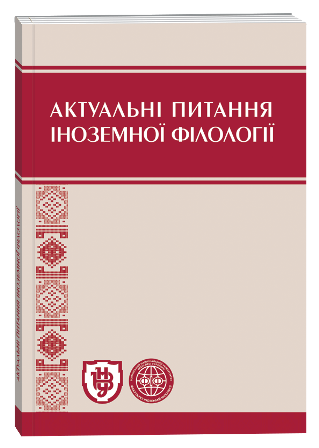THE SUBSTANTIATING OF THE ADOLESCENT AGE BOUNDARIES FOR LINGUISTIC AND COGNITIVE RESEARCH
DOI:
https://doi.org/10.32782/2410-0927-2020-13-7Keywords:
linguistic and cognitive research, adolescence, boundaries, periodsAbstract
In the article from the standpoint of linguo-cognitive interdisciplinary scientific research on the basis of classical achievements of psychology the author offers the original approach to solving the problem of substantiating the rational limits of adolescence. The author advances the view that such an approach should ensure the adequate use of linguistic research in related fields. Following the analysis of the contradictory interaction of the consequences that characterize the features of adolescent’s ontogenesis and phylogeny as an object of linguo-cognitive consideration, the paper defines the characteristics of his/her psychological loading in the course of interaction with the macro- and micro-social environment. The author outlines a simultaneous supervening influence of a number of reasons for the formation of general adolescent behaviour on the results of his/her communicative socialization. It is also shown that the factors whose complexes determine the nature of his/her communicative practice self-development are different in nature and vary according to the intensity of their impact on speech behaviour. By a systematic comparative analysis of the conceptual foundations of scientific works by R .A. Abdurahmanov, B. G. Ananyeva, L. I. Bozhovich, V. V. Davydova, I. V. Dubrovina, E. Erickson, D. B. Elkonin, I. S. Kon, V. F.Morgun, L. Vovkanych, S. Kras, D. P. Sidorenko, М. М. Smyrnyagina, N. Yu. Tkachova and others focused on the issues of defining the limits of adolescence, the author reveals the degree of variation of these limits used in the field of psychology. On this basis, a graphic image presenting the alternatives of the limits of adolescence outlined in psychological research, which allowed us to state that in lingual-cognitive research it is advisable to define the age of adolescence between the years 8 and 19 with its further differentiation into the following periods: the initial period (8-9-10-11 years old), the middle period (12-13-14-15 years old) and the final period (16-17-18-19 years old).
References
Abdurahmanov, Rinat. 1999. Vozrastnaya psihologiya. Ontogenez psihicheskih processov i lichnosti cheloveka. Moskva: NOU “Sovremennyj gumanitarnyi institut”.
Ananev, Borys. 2001. Chelovek kak predmet poznanyya. SPb.: Pyter.
Belinskaya, Elena and Kulykova, Yryna. 2000. “Predstavleniya podrostkov o svoem socialnom budushchem”. Mir psihologiyi 4: 135–147.
Vovkanych, Liubomyr and Kras, Stanislav. 2017. “Analiz shem vikovoi periodyzatsii postnatalnoho ontohenezu liudyny”. Sportyvna nauka Ukrainy Lvivskogo derzhavnoho universytetu fizychnoi kultury 6 (82): 9–17.
Entsyklopediya suchasnoi Ukrainy. 2007. Dytiache movlennia. URL: http://esu.com.ua/search_articles.php? id=24396
Kulagina, Irina & Koliuckyi, Vladimir. 2015. Psihologiya razvitiya i vozrastnaia psihologiya: polnyi zhiznennyi tsykl razvitiya cheloveka. Moskva: Akademicheskiy proyekt.
Sydorenko, Denys. 2016. “Vozrastnie aspekty zrelosti stanovlenyya sotsialnogo Ya shkolnikov”. Akmeologyia 2(58): 87–93.
Smirniagina, Mayia. 2009. “Vozrastniye granitsy i psihologicheskoe soderzhanie stabylnogo perioda podrostkovogo vozrasta”. Vestnik Yuzhno-uralskogo gosuderstvennogo universyteta. Seriya “Psihologiya” 5 (138): 56–61.
Erikson, Erik. 1996. Detstvo i obshchestvo. SPb.: Lenato, AST, Fond “Universitetskaja kniga”.







